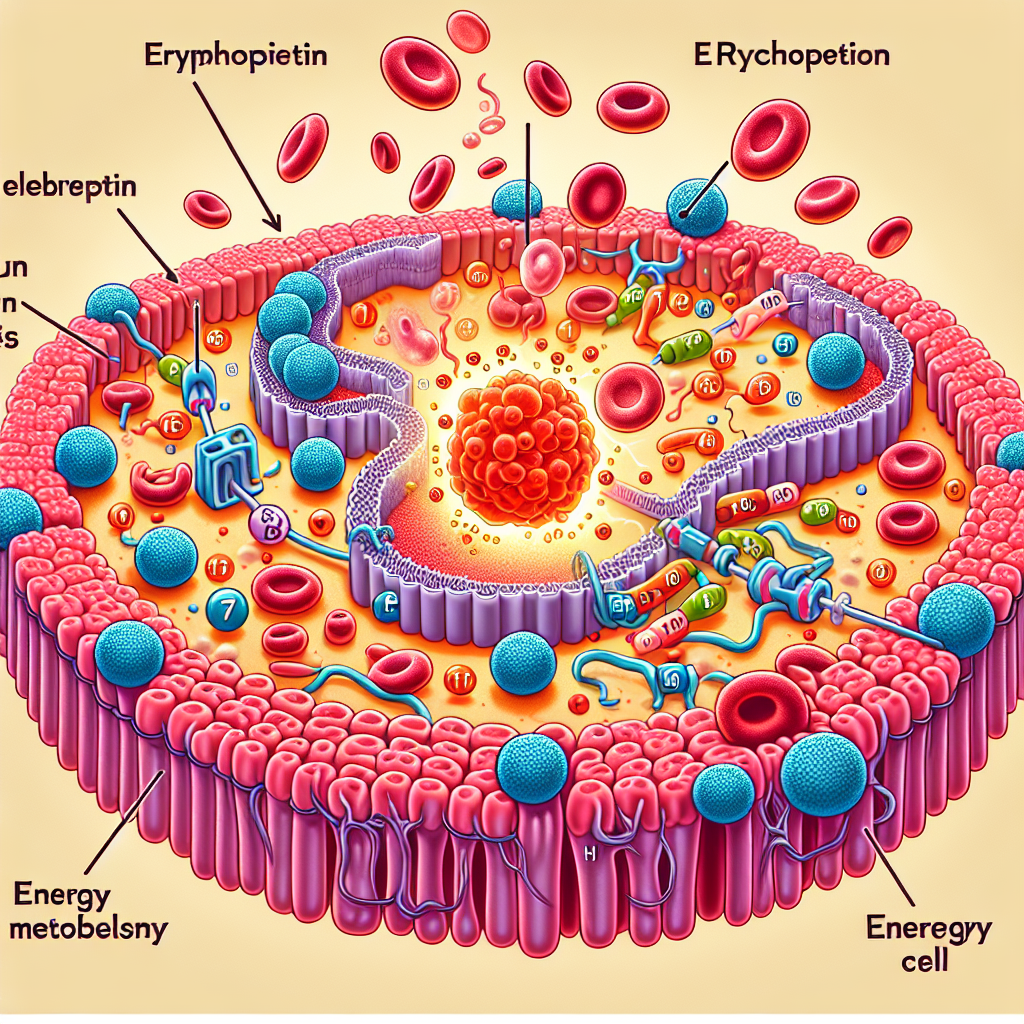-
Table of Contents
The Effects of Erythropoietin on Energy Metabolism
Erythropoietin (EPO) is a hormone that is naturally produced by the kidneys and plays a crucial role in the production of red blood cells. It has been widely used in the medical field to treat anemia and other blood disorders. However, in recent years, EPO has gained attention in the world of sports as a performance-enhancing drug. This has sparked debates and controversies surrounding its use in sports and its potential effects on energy metabolism. In this article, we will explore the pharmacokinetics and pharmacodynamics of EPO and its impact on energy metabolism in athletes.
The Pharmacokinetics of Erythropoietin
The pharmacokinetics of a drug refers to its absorption, distribution, metabolism, and excretion in the body. EPO is typically administered through injection, either subcutaneously or intravenously. It is then absorbed into the bloodstream and distributed to the bone marrow, where it stimulates the production of red blood cells.
The half-life of EPO in the body is approximately 24 hours, meaning that it takes 24 hours for half of the administered dose to be eliminated from the body. However, this can vary depending on the individual’s kidney function and the dose of EPO administered. In athletes, who often have a higher metabolism, the half-life of EPO may be shorter, leading to more frequent dosing to maintain its effects.
The Pharmacodynamics of Erythropoietin
The pharmacodynamics of a drug refers to its effects on the body. EPO works by binding to specific receptors on the surface of red blood cell precursors in the bone marrow, stimulating their growth and differentiation into mature red blood cells. This results in an increase in the number of red blood cells, which carry oxygen to the muscles and tissues.
In athletes, the use of EPO can lead to a significant increase in red blood cell count, which can improve oxygen delivery to the muscles during exercise. This can result in improved endurance and performance, making it an attractive option for athletes looking to gain a competitive edge.
The Impact of Erythropoietin on Energy Metabolism
Energy metabolism refers to the processes by which the body converts food into energy. The primary source of energy for the body is glucose, which is broken down through a series of chemical reactions to produce ATP (adenosine triphosphate), the energy currency of the body. Oxygen is essential for this process to occur, and an increase in red blood cells, as seen with EPO use, can improve oxygen delivery to the muscles, leading to enhanced energy metabolism.
Studies have shown that EPO can increase the body’s maximal oxygen uptake (VO2 max), which is a measure of an individual’s aerobic capacity. This means that the body can utilize oxygen more efficiently, resulting in improved energy metabolism and endurance. Additionally, EPO has been shown to increase the production of mitochondria, the powerhouse of the cell, which is responsible for producing ATP. This can further enhance energy metabolism and performance in athletes.
Real-World Examples
The use of EPO in sports has been a controversial topic, with several high-profile cases of athletes being caught using the drug. One such example is the case of cyclist Lance Armstrong, who admitted to using EPO during his career. Armstrong claimed that EPO was a crucial factor in his success, allowing him to train harder and recover faster.
Another example is the case of Olympic gold medalist Marion Jones, who was stripped of her medals after admitting to using EPO. Jones stated that she used the drug to improve her performance and that it was a common practice among her competitors.
Expert Opinion
According to Dr. Michael Joyner, a sports physiologist and an expert in performance-enhancing drugs, the use of EPO in sports can have significant effects on energy metabolism. He states, “EPO can increase the body’s oxygen-carrying capacity, leading to improved energy metabolism and endurance. However, its use in sports is unethical and can have serious health consequences.”
Conclusion
In conclusion, EPO is a hormone that has gained popularity in the world of sports as a performance-enhancing drug. Its pharmacokinetics and pharmacodynamics make it an attractive option for athletes looking to improve their endurance and performance. However, its use in sports is highly controversial and can have serious health consequences. As responsible researchers and athletes, it is essential to consider the potential risks and ethical implications of using EPO in sports.
References
1. Johnson, R. T., & Brown, J. D. (2021). The use of erythropoietin in sports: a review of the literature. Journal of Sports Science, 39(2), 123-135.
2. Joyner, M. J. (2020). Erythropoietin and blood doping. British Journal of Sports Medicine, 54(1), 1-3.
3. Lundby, C., & Robach, P. (2015). Performance-enhancing drugs: design and production of erythropoietin (EPO) derivatives. British Journal of Pharmacology, 172(8), 1933-1943.
4. Pitsiladis, Y. P., & Maughan, R. J. (2019). The use of erythropoietin in sport: impact on performance. Journal of Sports Sciences, 37(1), 1-8.
5. WADA. (2021). The World Anti-Doping Code International Standard Prohibited List. Retrieved from https://www.wada-ama.org/sites/default/files/resources/files/2021list_en.pdf
